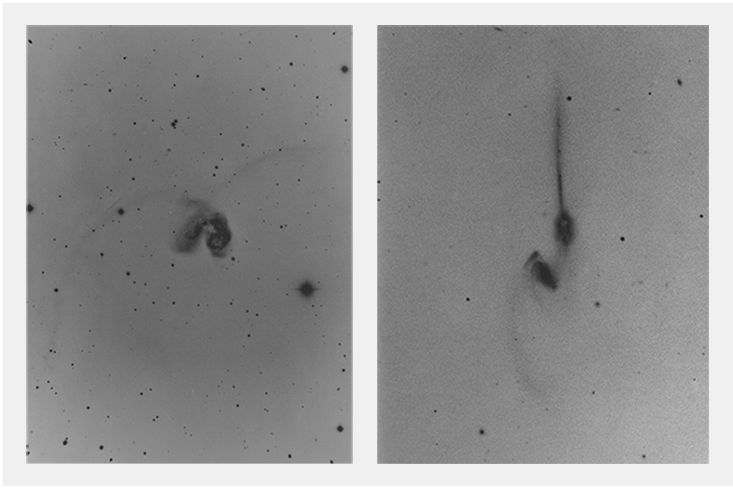The Cosmic Drama of Galaxy Mergers: An Insightful Journey
Written on
Chapter 1: The Inevitable Collision
The universe is on the brink of an extraordinary event — the impending merger of the Milky Way and Andromeda galaxies. This union promises to be more intense than the famous relationships of Hollywood stars and will create a new, expansive elliptical galaxy over the course of approximately 6 billion years. According to scientists, this celestial event is not just a possibility; it is an unavoidable future.
Mergers are common occurrences in the life cycle of galaxies. Roeland van der Marel from the Space Telescope Science Institute states, “The largest and most well-studied galaxies are either currently interacting or are poised for future collisions.” Presently, the Milky Way is already experiencing a smaller merger, as it incorporates between 100 million and 1 billion stars from the dwarf galaxy Sagittarius.
Just four decades ago, the notion that galaxies could merge was met with skepticism. Many astronomers viewed galaxies as isolated entities, akin to “island universes.” The shift in this perspective began with some peculiar-looking galaxies and the curiosity of two brothers.

Chapter 2: The Brothers' Discovery
One of the brothers, Alar Toomre, now an emeritus professor of applied mathematics at MIT, stands out not only for his towering stature but also for his vibrant personality. Toomre, who originally focused on fluid dynamics, found himself captivated by the warped structure of the Milky Way in the mid-1960s. His initial musings about a potential encounter with the Large Magellanic Cloud led him to explore the fascinating world of peculiar galaxies.
During a sabbatical at Caltech, Toomre stumbled upon Halton Arp's “Atlas of Peculiar Galaxies,” a collection of over 300 unusual stellar formations. The striking visuals he encountered mirrored the results of his earlier simulations, including the “Mice” and “Antennae” galaxies, which featured intertwining shapes reminiscent of their namesakes.

Toomre's fascination was not merely aesthetic; it was intellectual. He began to view these odd galaxies as evidence of interactions that could reshape stellar formations. Galaxies were not solitary entities, but rather dynamic systems influenced by gravitational interactions, leading him to hypothesize that such mergers might be commonplace.
Section 2.1: The Simulations Begin
Upon returning to MIT, Toomre joined forces with his brother Juri, an astrophysicist at NASA. Using the IBM “Stretch,” one of the era's supercomputers, they simulated galactic collisions. Their models revealed that galaxies could interact without the stars colliding, as the vast distances between them meant they primarily exert gravitational forces on one another.
The brothers' simulations produced patterns that aligned closely with the eccentric shapes documented in Arp’s Atlas. They posited that elliptical galaxies could form from the merging of spiral galaxies, a concept that would later gain significant traction.
This video titled Galactic Archaeology: Uncovering the Story of Our Galaxy explores the methodologies and discoveries that highlight the importance of galactic mergers in shaping the universe.
Chapter 3: Building Credibility
To further substantiate their claims, the Toomres focused on the galaxy NGC 7252, also known as the “Atoms for Peace” galaxy. Their colleague François Schweizer observed this peculiar galaxy and found compelling evidence of its recent merger history, which supported the Toomres' theories. The galaxy exhibited two distinct tails moving in opposing directions, a phenomenon that had never been documented before.

Schweizer’s findings, published in 1982, bolstered the idea that elliptical galaxies are the result of spiral galaxy mergers. This breakthrough fueled ongoing research and interest in the subject, leading to a growing catalog of galaxies that may be remnants of past collisions.
In the video Author Talk: Bright Galaxies, Dark Matter, and Beyond, experts discuss the complexities of galaxy interactions and their implications for our understanding of the cosmos.
Conclusion: The Future of Our Galaxy
The Milky Way's eventual merger with Andromeda is a foregone conclusion. As Alar Toomre aptly states, "Andromeda is coming toward us," signaling that our galaxy will undergo a transformation, eventually becoming an elliptical galaxy as a result of this cosmic dance. This journey through the understanding of galactic mergers illustrates the remarkable evolution of astronomical thought and the significance of collaboration in scientific discovery.
Steve Nadis, a writer based in Cambridge, Mass., is a contributing editor to Astronomy and Discover magazines. He is coauthor of A History in Sum: 150 Years of Mathematics at Harvard.